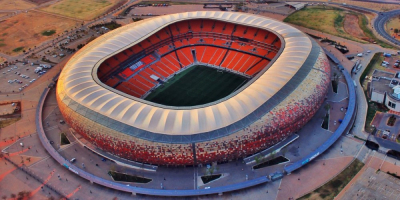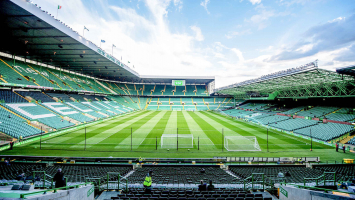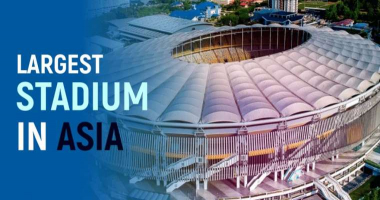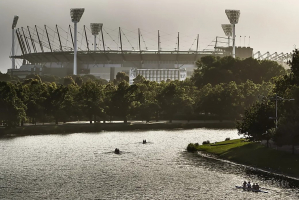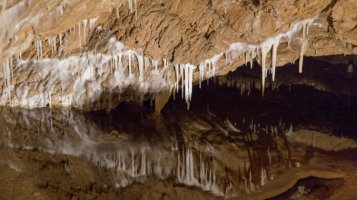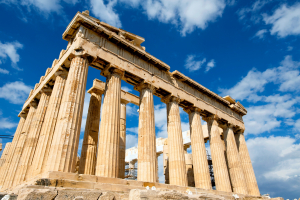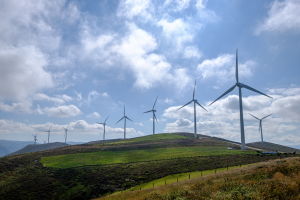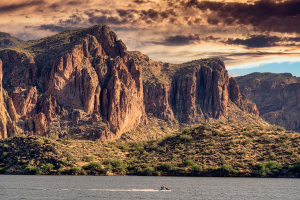Top 12 Biggest Stadiums in Americas
If you're a great fan of a sport like football, your goal is definitely to watch one of your favorite players play in one of the world's biggest and trendiest ... read more...stadiums. Sitting in a large football stadium with popcorn and enjoying it with your friends may appear in your imagination, but there are many football stadiums across the world, waiting for audiences like you to watch and explore. After all, Americas is the most populous continent on the list! As a result, Toplist has compiled a list of the largest football stadiums in the United States, which will pique your interest in learning more about these fascinating venues and their fascinating facts.
-
Michigan Stadium, sometimes known as "The Big House," is the football stadium for the University of Michigan in Ann Arbor, Michigan, one of the 50 United States of America.
It is the largest stadium in the United States and the Western Hemisphere, as well as the world's third-largest stadium, earning it the top rank on our list.
It has a capacity of 107,601 but has seen audiences of over 115,000.
The original capacity of Michigan Stadium was 72,000 when it was erected in 1927. Michigan defeated Ohio Wesleyan 33–0 in the inaugural game at Michigan Stadium on October 1, 1927.
Three weeks later, on October 22, the new stadium was formally dedicated in a game versus Ohio State.
The game between Michigan and the Notre Dame Fighting Irish on September 7, 2013, drew a crowd of 115,109, the highest attendance for a college football game since 1948.
Footings were built inside Michigan Stadium to allow the stadium's capacity to be increased beyond 100,000.
The University of Michigan's primary graduation ceremonies are held in Michigan Stadium, where President Lyndon B. Johnson unveiled his Great Society agenda during the 1964 commencement festivities.
In addition, a soccer match between Real Madrid and Manchester United in the 2014 International Champions Cup drew 109,318 spectators, setting a new record for a soccer match in the United States.
Capacity: 107,601 seats
Opened: October 1, 1927
Location: Ann Arbor, USASmithsonian Channel 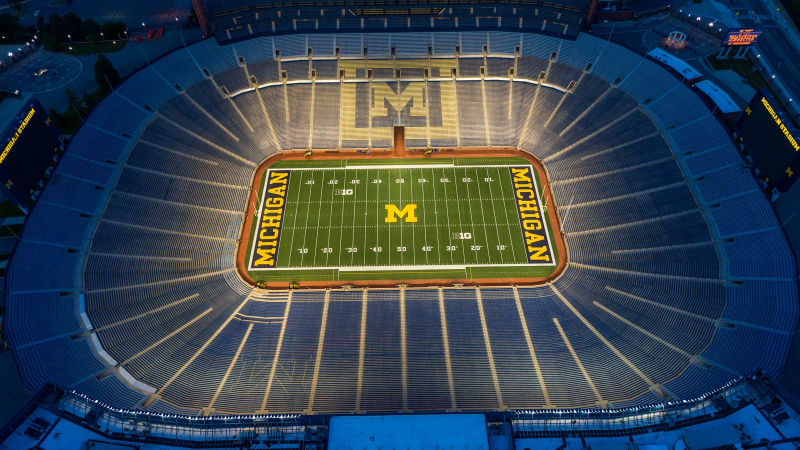
mgoblue -
Beaver Stadium is the next largest football stadium in the United States.
It has been the home of the Big Ten Conference's Penn State Nittany Lions since 1960, while some parts of the stadium date back to 1909.
New Beaver Field opened in 1909, about where the Nittany Parking Deck now stands, just northeast of Rec Hall.
The stadium is named after James A. Beaver, a former governor of Pennsylvania (1887–91), president of the university's board of trustees, and a native of nearby Millerstown, Pennsylvania.
Beaver Stadium is the second-largest stadium in the Western Hemisphere and the fourth largest in the world, with an official seating capacity of 106,572.
In a poll conducted by USA Today in 2016, Beaver Stadium has rated the best football stadium in college football, receiving almost 41% of the vote.
In a poll conducted by USA Today in March 2019, voters were asked to choose the best stadium in the United States, and Beaver Stadium defeated Kansas' Allen Fieldhouse to win the title of Ultimate Stadium.
Capacity: 106,572 seats
Opened: September 17, 1960
Location: University Park, Pennsylvania, USAPatrick Cines 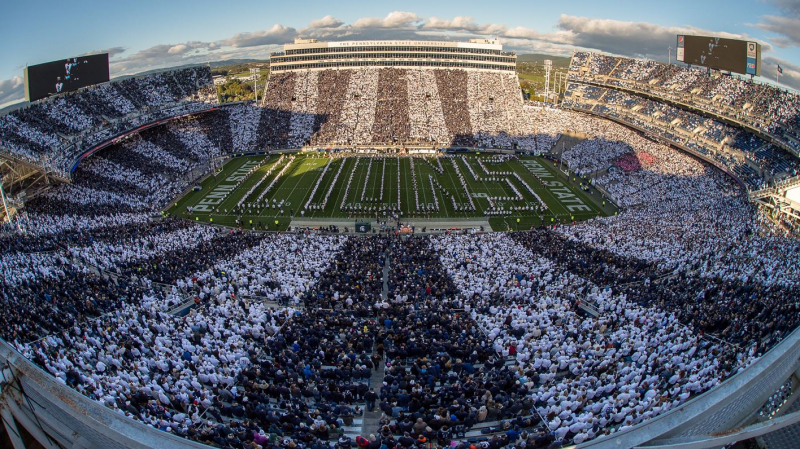
gopsusports -
Ohio Stadium, also known as the Horseshoe, the Shoe, and the House That Harley Built, is the third-largest football stadium in the United States and serves as the home of the Ohio State Buckeyes football team.
It also hosts the university's annual Spring Commencement ceremonies in May.
It is the state's largest stadium by capacity, as well as the third-largest on-campus football stadium in the US and the fifth-largest in the world.
Prior to the building of Columbus Crew Stadium in 1999, Ohio Stadium served as the home of the Columbus Crew of Major League Soccer from 1996 to 1998.
In addition to athletics, Ohio Stadium also serves as a music venue, with acts such as Pink Floyd, U2, Metallica, and The Rolling Stones among those who have performed there.
The stadium, which replaced Ohio Field in 1922, had a seating capacity of 66,210 people. On October 7, 1922, the stadium hosted its debut game against Ohio Wesleyan University, which drew a crowd of roughly 25,000, raising concerns about the stadium's half-emptiness.
Capacity: 102,780 seats
Opened: October 7, 1922
Location: Columbus, Ohio, USAOhio State Football 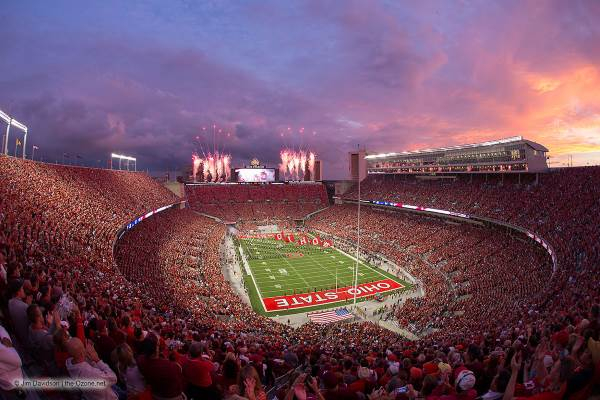
theozone -
The football stadium on the campus of Texas A&M University in College Station, Texas, is fourth on our list of the largest football stadiums in the United States.
Since 1904, Kyle Field has served as the temporary home of the Texas A&M Aggies football team, and since 1927, it has served as a permanent concrete stadium.
The stadium is the largest in the Southeastern Conference, the fourth-largest in the United States, and the sixth-largest non-racing stadium in the world, with a seating capacity of 102,733 in 2015.
Kyle Field has the biggest seating capacity of any football stadium in the state of Texas.
When Texas A&M fell 35–20 against the Ole Miss Rebels on October 11, 2014, the record game attendance at Kyle Field was 110,633. This was Texas's largest football game in terms of attendance.
Edwin Jackson Kyle, a horticulture professor at Texas A&M who graduated in 1899, was named president of the General Athletics Association in the fall of 1904.
Capacity: 102,733 seats
Opened: September 24, 1927
Location: College Station, Texas, USATexas A&M Athletics 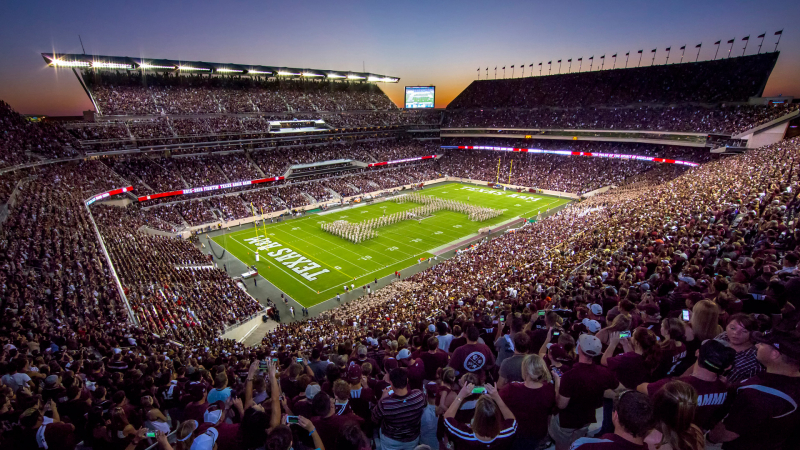
populous -
Neyland Stadium, which is primarily the home of the Tennessee Volunteers football team, is next on the list of the largest football stadiums in the United States.
It also serves as a venue for large meetings and has hosted a number of National Football League (NFL) exhibition games. The official seating capacity of the stadium is 102,455.
Shields–Watkins Field (which is currently the name of the playing surface) was built in 1921 and has had 16 extension projects, reaching a capacity of 104,079 at one point before being somewhat decreased by changes in the following decade.
Neyland Stadium is the fifth-largest stadium in the United States, the world's seventh-largest stadium, and the Southeastern Conference's second-largest stadium.
The stadium is named after Robert Neyland, who led the University of Tennessee football team for three years between 1926 and 1952.
General Robert Neyland, the recently dead former athletic director and coach, was honored when the stadium was renamed Neyland Stadium in 1962.
Capacity: 102,455
Opened: September 24, 1921
Location: Knoxville, Tennessee, USABumble Bee Productions Channel 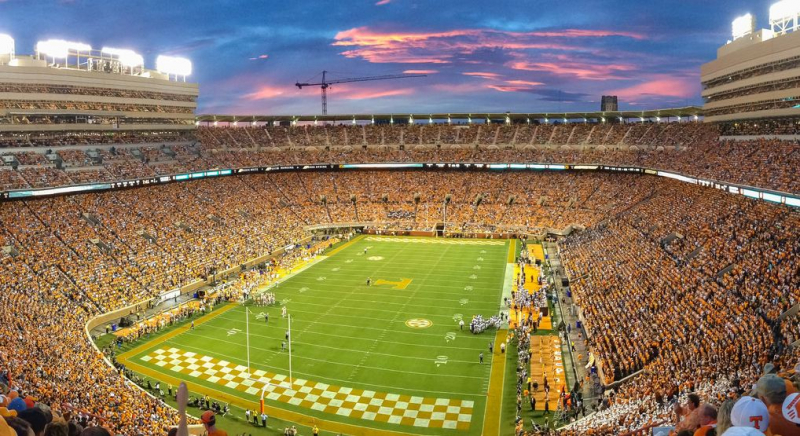
collegegridirons -
Tiger Stadium, also known as Death Valley, is an outdoor stadium on the campus of Louisiana State University in Baton Rouge, Louisiana. The LSU Tigers football team plays its home games there.
In 1924, Tiger Stadium was built with a seating capacity of 12,000 people. Renovations and extensions have increased the stadium's capacity to 102,321, making it the SEC's third-largest stadium, the sixth-largest stadium in the United States and on our list, and the eighth-largest stadium in the world.
Tiger Stadium is known for its electrifying game-day atmosphere, but it's also known for being one of the most difficult venues to play – at least for visiting teams.
Tiger Stadium was voted "the scariest place to play" by ESPN in 2007, with the statement that "Tiger Stadium is, by far, the loudest stadium in the country."
Capacity: 102,321
Opened: November 25, 1924
Location: Baton Rouge, Louisiana, USAForgotten Places Channel 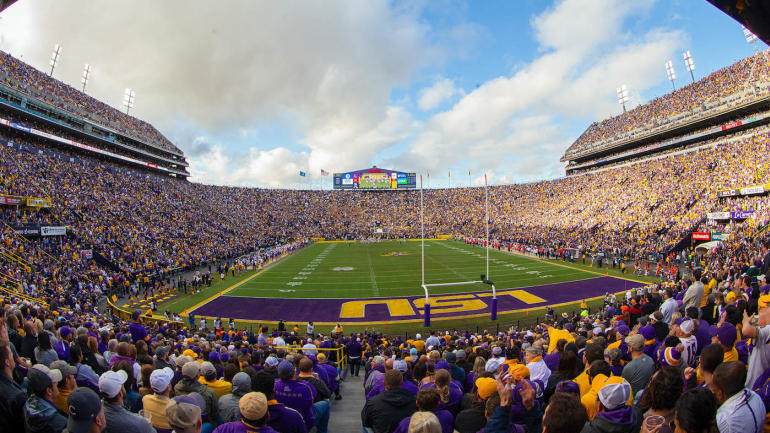
cbssports -
The seventh stadium on our list is located on the campus of the University of Alabama in Tuscaloosa in the southeastern United States.
Bryant–Denny Stadium, which opened 91 years ago in 1929, was originally named Denny Stadium for George H. Denny, the school's president from 1912 until 1932.
In 1975, the state legislature changed the stadium's name to honor veteran head coach and alumni Paul "Bear" Bryant.
It is the fourth-largest stadium in the Southeastern Conference, the seventh-largest stadium in the United States, and the tenth-largest stadium in the world, with a seating capacity of 100,077.
Capacity: 100,077
Opened: September 28, 1929
Location: Tuscaloosa, Alabama, USAAlabama Crimson Tide on AL.com Channel 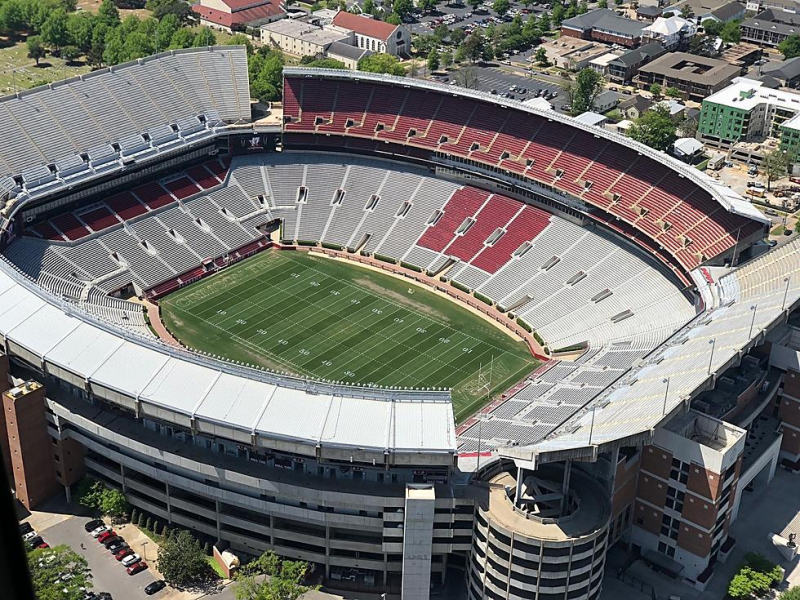
953thebear -
Darrell K Royal-Texas Memorial Stadium, formerly War Memorial Stadium, Memorial Stadium, and Texas Memorial Stadium, is the ninth-largest stadium in the United States, with a capacity of 95,594.
Since 1924, it has been the home of the Texas Longhorns football team. It is ranked number eight on the list of the largest football stadiums in the United States.
The official stadium's seating capacity was 100,119 before construction to build permanent south end zone seating and luxury suites, making it the largest in the Big 12 Conference, the seventh-largest stadium in the United States, and the ninth-largest stadium in the world, surpassing Bryant-Denny Stadium.
On September 15, 2018, when Texas hosted The University of Southern California, the DKR–Texas Memorial Stadium attendance record of 103,507 was set.
In 1996, the University of Texas officially named the stadium after legendary football coach Darrell K Royal, who enlisted in the United States Army Air Corps in 1943, played at the University of Oklahoma under legendary Coach Bud Wilkinson, and led Texas to three national championships and eleven Southwest Conference titles.
Capacity: 95,594 (currently reduced from 100,119)
Opened: November 8, 1924 (first game), November 27, 1924 (dedication)
Location: Austin, Texas, USASkyhawk Videos Channel 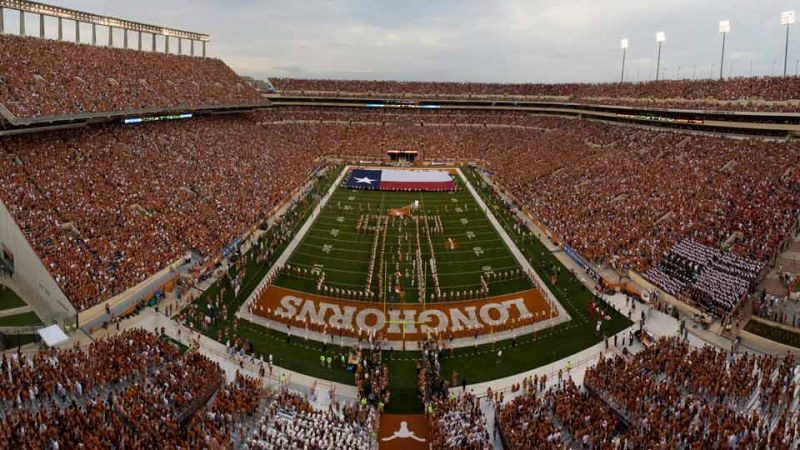
texasboxoffice -
Mexico City's Estadio Azteca is a multi-purpose stadium. It is the home of the Mexican national football team as well as the football club - Club América. The stadium is located at a height of 2,200 meters (7,200 ft). It is Mexico's largest stadium, with an official capacity of 87,523. Cruz Azul plays its home games at the stadium as of 2018. As part of its International Series, the National Football League (NFL) plays one game in Estadio Azteca each season.
It is one of the most famous and iconic football stadiums in the world, having hosted two FIFA World Cup Finals: Brazil defeated Italy 4–1 in the 1970 World Cup Final, and Argentina defeated West Germany 3–2 in the 1986 World Cup Final. It also hosted Argentina's quarter-final encounter against England in 1986, in which Diego Maradona scored the "Hand of God goal" as well as the "Goal of the Century." The Estadio Azteca is the only football arena in the world where both Pelé (1970) and Diego Maradona (1986), two of the greatest football players of all time, have won Fifa World Cups. In one of the 1970 semifinal matches, the stadium hosted the "Game of the Century," when Italy overcame West Germany 4–3 in extra time. In addition, it will host games during the FIFA World Cup in 2026.
The stadium also served as the main location for the 1968 Summer Olympics football competition and the 1971 Women's World Cup.
Capacity: 95,500 seats
Opened: 29 May 1966
Location: Tlalpan, Mexico City, Mexicoc13studio Channel 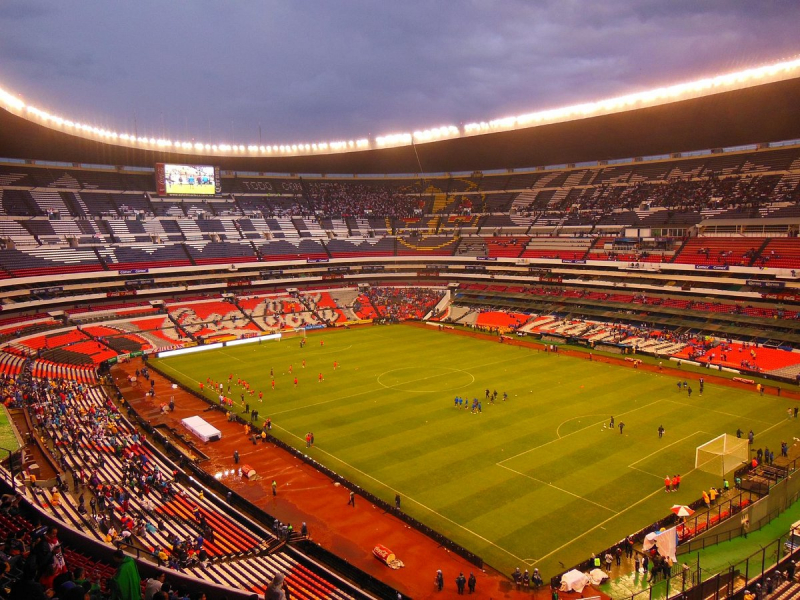
tripadvisor -
Sanford Stadium is a football stadium on the University of Georgia's campus in Athens, Georgia, United States (also known as UGA).
The 92,746-seat stadium is the ninth-largest in the United States and the fourteenth-largest in the world, according to our list.
Unlike most stadiums, Sanford Stadium has maintained having a natural grass field since its inception.
On September 21, 2019, the stadium's seating capacity was temporarily increased to 93,246 for the Notre Dame Game.
Dr. Steadman Vincent Sanford, an early significant mover behind UGA athletics, is honored with the stadium's name.
Sanford began teaching English at the University of Georgia in 1903. Later, he served on the athletics committee as a faculty representative before becoming president of the university and Chancellor of the University System of Georgia. In 1911, he relocated the university's football stadium from its original location, Herty Field, to a new location in the heart of campus, which he named Sanford Field.
Capacity: 92,746 seats
Opened: October 12, 1929
Location: Athens, Georgia, USA
maddog8321 Channel 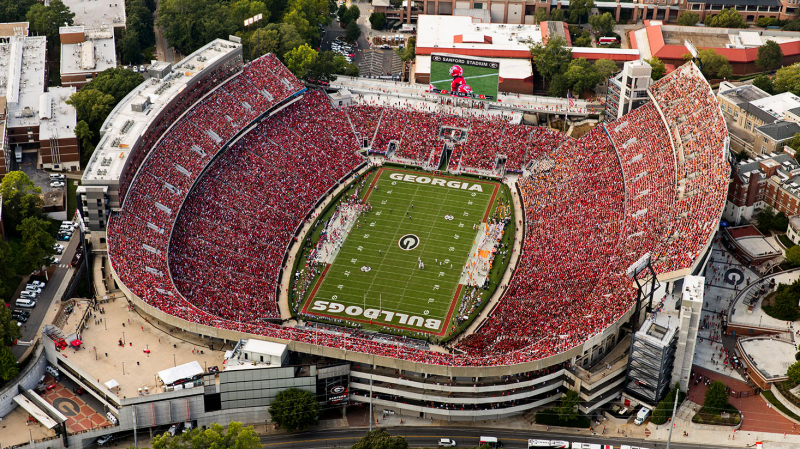
thegeorgiabulldogclub -
The stadium, which opened in October 1922, is a National Historic Landmark and a California Historic Civil Engineering landmark. It is ranked number ten on our list of the top ten largest football stadiums in the United States.
The Rose Bowl, with a current capacity of 92,542 in an all-seated layout, is the world's 15th-largest stadium and the United States' 10th-largest stadium.
The Rose Bowl, one of the most famous sporting venues in history, is best known as a college football venue, specifically as the site of the Rose Bowl Game, for which it is named.
The Rose Bowl is also a well-known soccer facility, having hosted the 1994 FIFA World Cup Final, the 1999 FIFA Women's World Cup Final, the 1984 Olympic Soccer Gold Medal Match, and several CONCACAF and USSF events.
Capacity: 92,542 seats
Opened: October 28, 1922
Location: Pasadena, California, USADrone World's Channel 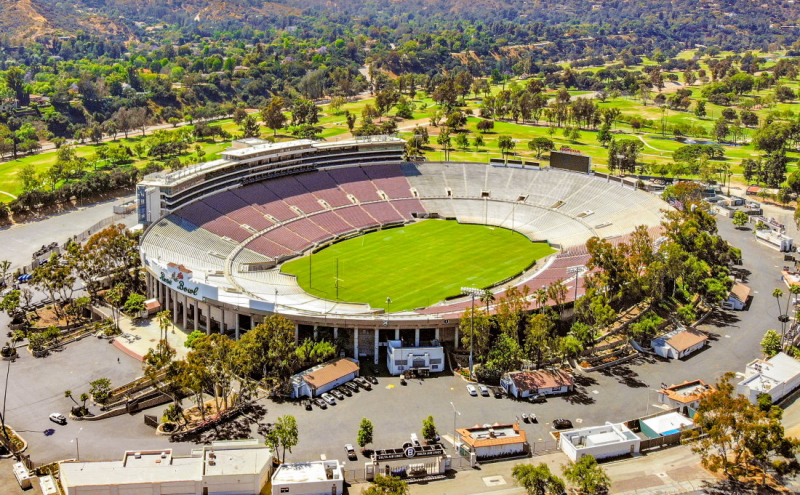
stadiumguide -
The Cotton Bowl is an outdoor stadium located in Dallas, Texas. It was built on the grounds of the Texas State Fair, known as Fair Park, and opened in 1930 as Fair Park Stadium.
The Cotton Bowl Classic, for which the stadium is named, is an annual college football post-season bowl game held at the Cotton Bowl. It hosted the first 73 editions of the game, beginning on New Year's Day 1937 and ending in January 2009; the game was transferred to AT&T Stadium in Arlington in January 2010. The stadium also hosts the Red River Showdown, the annual college football game between the Oklahoma Sooners and the Texas Longhorns, and the First Responder Bowl.
Due to the massive crowds that SMU running back Doak Walker drew to the stadium during his undergraduate career in the late 1940s, it was dubbed "The House That Doak Built."
On January 1, 1967, the Cowboys hosted the Green Bay Packers for the NFL championship in the Cotton Bowl, in their sixth season. SMU was in the collegiate bowl game that year, which was played the day before New Year's Eve, necessitating a rapid turnaround to alter the field. The two games drew a combined 75,504 spectators, although none of the local teams were victorious.
In preparation for the 1994 FIFA World Cup, artificial turf was built in 1970 and removed in 1993. The playing field is located about 450 feet (140 meters) above sea level.Capacity: 92,100 seats
Opened: 1930
Location: Dallas, Texas, USA
Mike Hurley Channel 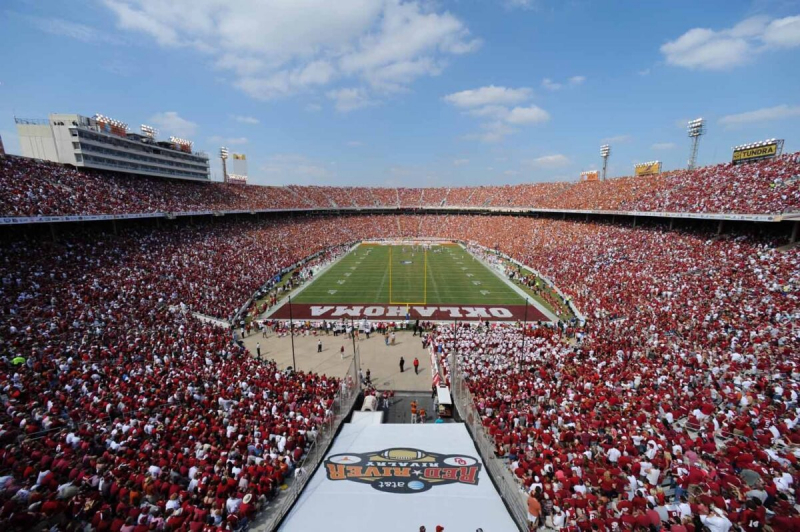
spacefinderdallas














